





Tropical plants are an amazing statement to add to any garden, offering exotic design sense and wonderful texture and color. Ok, we love ’em ’cause we can pretend to be on a beach in Fiji, or wandering around the rain forests in Hawaii, or pretty much any other place in the world where tropicals thrive. The trouble is, tropical plants are just that… tropical. And most of us don’t live in such exotic growing zones. (All of you lounging under your palm trees in Florida, stop laughing at us. ) However, we found these hardy tropicals you can grow, just about anywhere! Some of them are pretty hardy in all but the coldest climates (hey, there are places even roses won’t grow!) and some of them need some winter protection. Some of them come back every year, but a few others are annuals you can use to fill in your tropical garden as it grows. All of them are worth a try for any gardener!
There are three types of tropicals we are going to cover for the sake of planning such a space. There are too many to list them all, so if you choose a few in each category, you are well on your way to a tropical zone! Remember, to always have hardscaping structure when trying to grow a “wilder” type of naturalized garden like this. A well placed path, deck, or gazebo will help pull the garden together when those huge leaves, bountiful flowers and dramatic focal points start to make your world their own! Photo above by ‘Balcony Garden Web‘.
Height and Drama
Palms
The most cold hardy palm grown in the U.S. is called the Windmill Palm. Hardy down to zone 7, it can be made even more hardy by taking winter precautions. Many gardeners grow palms in Ohio, New York and Virginia, by wrapping the tree with burlap, planting in a wind protected position, and mulching deeply. Generally grows 10- 20 feet tall, in full to partial sun. Can be potted in a large container. Often used at tropical location hotels. Photo from ‘Fast Growing Trees‘.
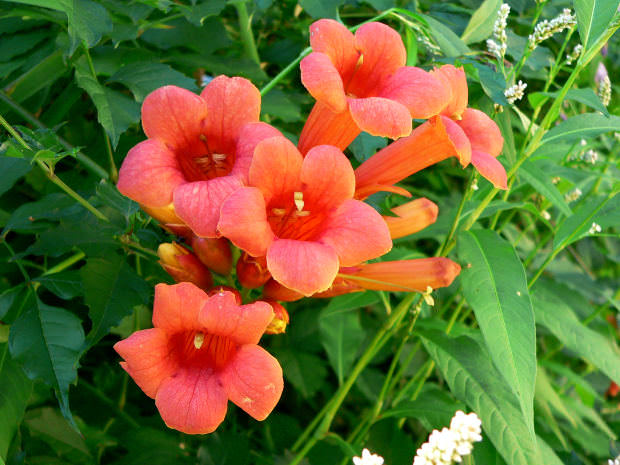
Clumping Bamboo
If you are thinking about getting some bamboo for your tropical paradise, good choice. And make sure you read our post on how to grow bamboo. The trick here is to know the difference between clumping bamboo, and running bamboo. Plant the latter only if you want your home, yard and the nearest neighbors to be swallowed whole by the plant. Clumping bamboo has none of it’s more aggressive cousins nasty qualities, but all of the good ones. Photo by ‘Bella Bree‘.
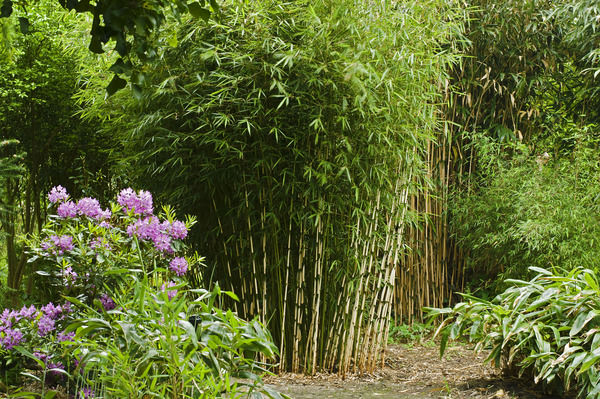
Elephant Ears
Elephant Ear is a tender tuber that can be planted anywhere, as long as you lift the tubers after the first frost and store indoors until spring. This mammoth plants can grow to 6 feet tall with 3 foot long leaves, and do well in partial shade. Definitely a plant for drama! Photo by ‘Wayside Gardens‘.
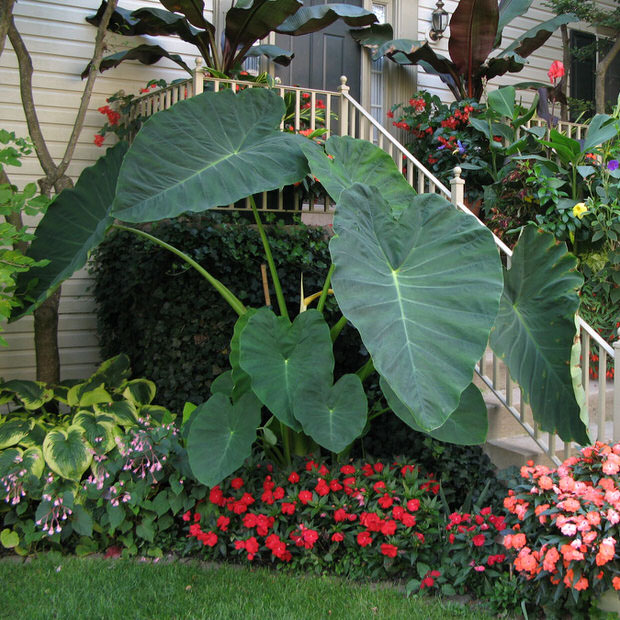
Hardy Banana
The Hardy Banana Plant is hardy down to below zero at the rhizome, but the leaves will freeze and fall off below 28 degrees. If you mulch well and keep the rhizome from freezing, you will have a banana come back year after year. Cisco Morris from ‘The Seattle Times’ has a great tutorial on how to prep your hardy banana for winter. Photo by ‘Amazon‘.
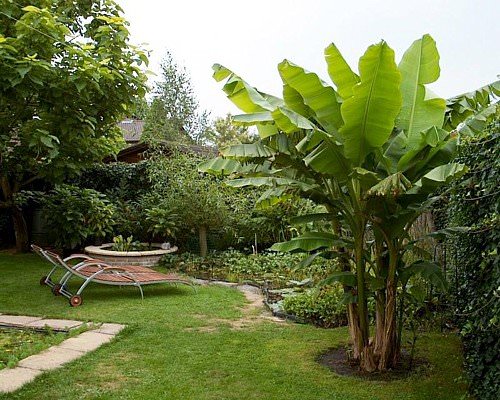
Gunnera, or Giant Rhubarb
Another plant hardy only to zone 7, but can be lifted in the fall and stored in peat or vermiculite. This is one of the largest herbaceous plants on earth, growing 8-10 feet tall and wide. Protect from afternoon sun, and keep well watered. They can also be grown in a large container and moved into a frost free garage to go dormant for the winter. Photo by ‘Missouri Botanical Garden‘.
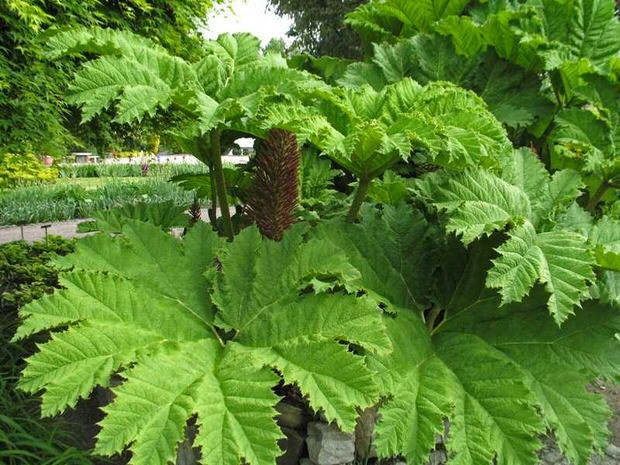
Color and Scent
Toad Lily
The toad lily is an exotic looking hardy lily plant that blooms in August and September, in the shade! 1-2 feet tall and wide, this plant is hardy down to zone 4 and is a great filler between and under this larger drama plants, giving you pretty pink flowers that look like orchids. ‘Missouri Botanical Garden‘.
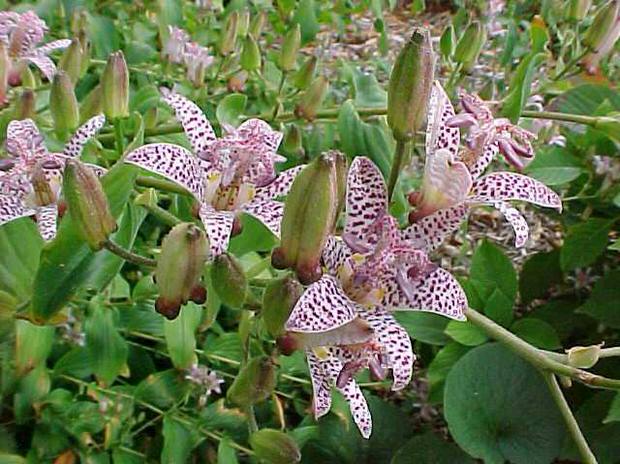
Hardy Hibiscus, Rose Mallow
Hardy Hibiscus grows 4-6 feet high in full sun, and has plate size tropical blooms all summer long. Oh, did we mention it’s hardy down to zone 4? Coming in blues, purples, pinks, reds and whites, this is a show stopper! Photo by ‘White Flower Farm‘.
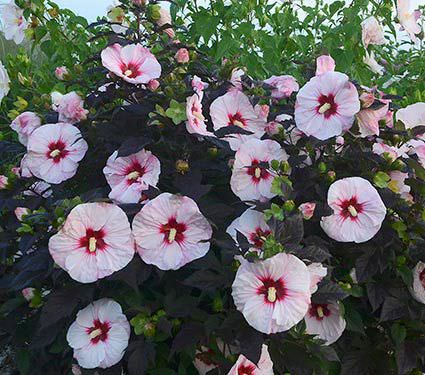
Hardy Fuchsia
If you’ve never tried the Hardy Fuchsia, and only had the hanging tender variety, you are missing out, Hardy Fuchsia grow 6-10 feet high and as wide as a shrub, with the same gorgeous pendulous flowers. Only this one is hardy down to zone 6! Can you imagine the butterflies and hummingbirds? Protect from afternoon shade and keep moist in fertile soil. Photo from ‘Fine Gardening‘.
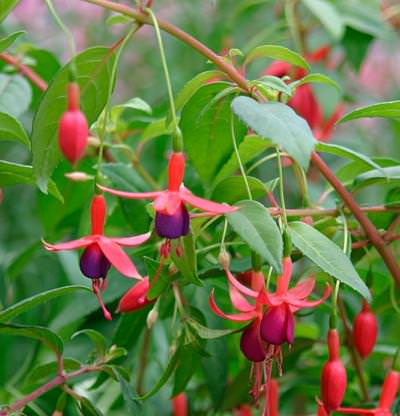
Trumpet Vine
A vigorous vine that needs a strong support to grow, but will keep your garden full of tropical looking tubular yellow, orange or red flowers all summer. (And keep those hummingbirds around!) Full sun and something to grow onto is about all this plant needs, hardy down to zone 5. Fine with poor soil, fast growing, but can take a couple years to start blooming.

Fillers and greenery
Sweet Potato Vine
Sweet potato vine is an annual, so not hardy anywhere except the Southern US… It is however, a very cheap bedding plant that grows very quickly to 6 feet long. Great in containers it also can be used as a bedding plant to create some tropical lushness. Both in free and red leaved forms. Our favorite is ‘Margarita’, in a lime green. Sun, partial shade, keep moist, fertilize regularly. We pinch ours back when about 12 inches high to create a busier plant. Photo by ‘White Flower Farm‘.
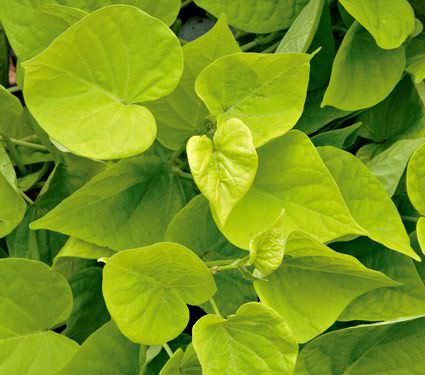
Annual Vinca
A flowering bedding plant that is hardy to zone 9, but most of us grow it like an exotic form of petunias. They usually grow 6 inches – 1 foot tall and as wide, and are covered all summer long with flowers in pinks, whites and reds. They are self cleaning, which means they don’t need to be deadheaded. Drought resistant, full sun, but do best well watered, with some moderate fertilizer. A workhorse in the tropical garden! Photo by ‘BHG‘.
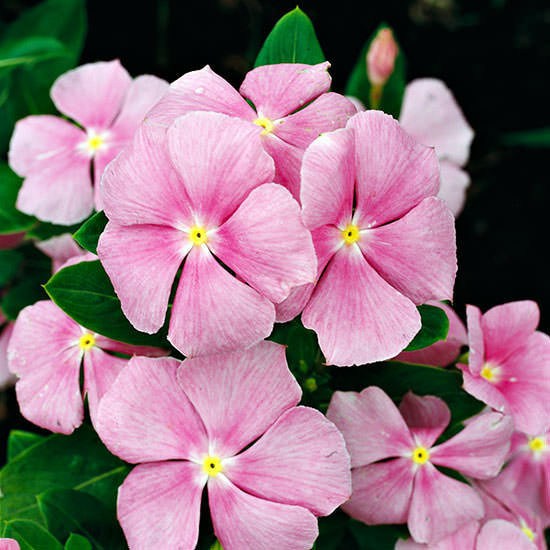
Caladium
Here is your colorful foliage tropical for the shade. Caladiums can technically be made to be hardy, because they are bulbs you can dig up in the fall… When the daytime temps drop into the 50’s, dig the bulbs and leaves, let ‘em dry for a week or so, trim off the tops and store the bulbs in a warm (60°F+) ventilated area for planting next spring. Shade and a well drained moist soil is all they need to make a glowing tropical bed or container. There are so many different varieties too! Greens with pinks, reds and whites mixed in so many ways. Photo by ‘Classical Caladiums‘.
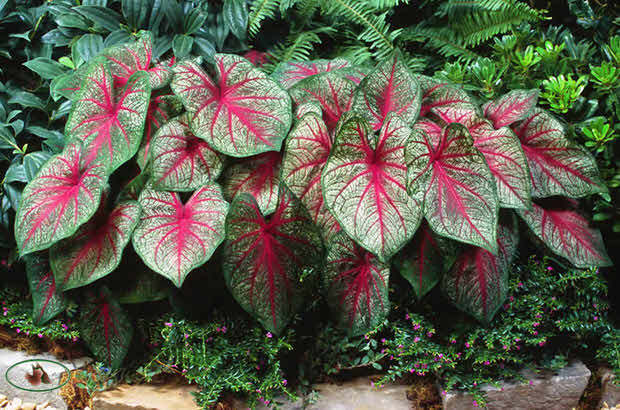
Have you tried a tropical in your garden? Share how you made it work in comments!
Copyright © www.100flowers.win Botanic Garden All Rights Reserved